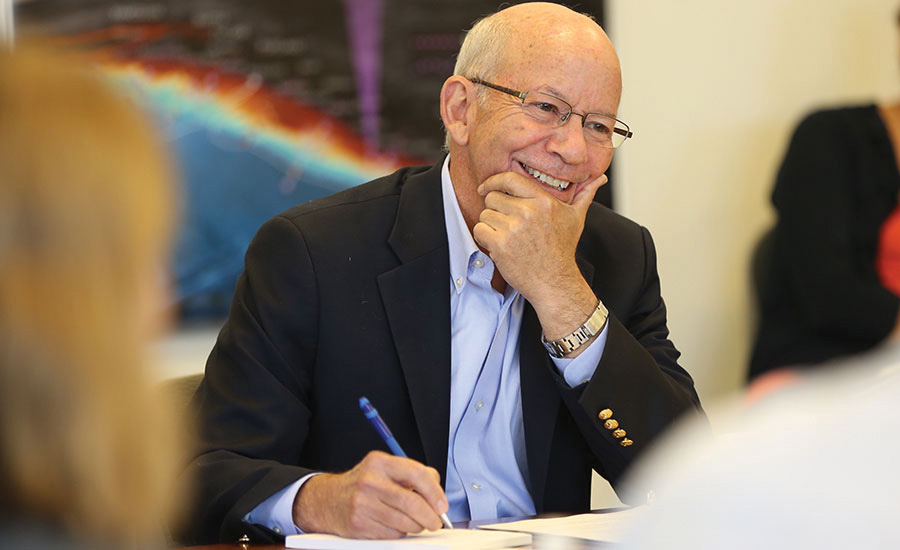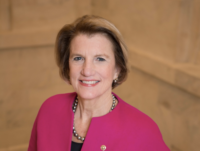When Rep. Peter DeFazio, the new House Transportation and Infrastructure Committee chairman, opened his panel’s first infrastructure hearing in the new Congress, he tapped some buttons on his phone and, on purpose, set off what sounded like a warning klaxon. “That is the alarm sounding for America’s infrastructure,” the Oregon Democrat told the scores of attendees at the Feb. 7 hearing. He added that “there’s a four-alarm situation in front of us.”
The questions are whether a majority in Congress and the Trump administration will respond to that alarm—and if so, when, and where will the additional money come from. The infrastructure spending gap is wide: DeFazio cited the American Society of Civil Engineers’ estimate of $2 trillion over 10 years.
Just two days earlier, construction and engineering officials watching President Trump’s State of the Union Address received the signal they were waiting for, when Trump said he is “eager” to work with Congress on legislation that would bring about a “great rebuilding of America’s crumbling infrastructure.” He added, “‘This is not an option. This is a necessity.”
But the mention of infrastructure in the 80-plus-minute address was brief and the president provided no specifics about how large the plan should be or how he would pay for it.
In his 2018 State of the Union speech, Trump put a number on his plan, saying investment should be “at least $1.5 trillion.” Fleshing out the idea, he said federal dollars “should be leveraged by partnering with state and local governments and, where appropriate, tapping into private sector investment to permanently fix the infrastructure deficit.” The plan went nowhere on Capitol Hill last year, however.
This year, leaders of industry groups were pleased to hear Trump again touch on infrastructure. But some of them also underscored that any such legislation must deal with the Highway Trust Fund’s revenue problem.
In his prepared statement, DeFazio noted that he has proposed three bills. One, which he calls the “Penny for Progress,” would index the federal gas and diesel tax for future increases tied to inflation and use that revenue to back about $500 billion in infrastructure bonds.
Another DeFazio proposal would ensure that revenue flowing annually into the Harbor Maintenance Trust Fund would be spent on projects. He said that move would provide more than $18 billion. His third measure would increase or eliminate the $4.50 cap on airport passenger facility charges, which has been in place since 2000. DeFazio said that would raise “billions of dollars each year” for airport infrastructure.
Rep. Sam Graves (Kan.), the House committee’s new ranking Republican, said that “we can’t address our long-term funding issues without finally fixing the Highway Trust Fund.” Graves added, “We’ve kicked this can down the road so many times already. Pretty soon we can kick it right off the map.”
Graves backs the idea of making a transition from the motor-fuels levy to a tax on vehicle-miles (VMT) traveled. “I see this as the best way to ensure that everyone contributes … to the trust fund.”
Oregon has tested VMTs and in 2016 the Federal Highway Administration awarded a total of $14 million to eight projects in seven states to test alternative revenue ideas, including mileage fees. “It’s time to pursue this solution nationally,” Graves said. Another priority, he said, for himself and the Trump administration, is “streamlining project delivery while continuing to protect the environment.”
Testifying before the House committee, Ray LaHood, President Obama’s first transportation secretary, recommended a 10¢-per-gallon gas-tax hike, plus inflation indexing. La Hood, a Republican, said that public-private partnerships as well as vehicle-miles taxes can be part of the plan, too.
LaHood, an Illinois congressman from 1995 to 2009, added, “I think the House has the ability to pass a big, bold plan.” He said he also believes that the tax-writing Ways and Means Committee “will try to find the money for you.”
LaHood added, “But if President Trump is not with you on this, then it’s going to be very difficult to pass in the Senate. … So I think you need a good signal from the White House.”





Post a comment to this article
Report Abusive Comment